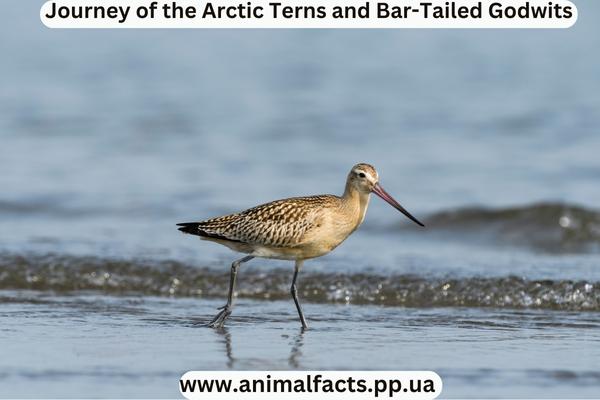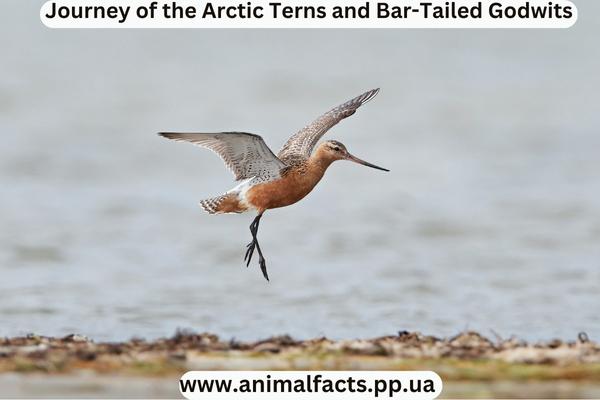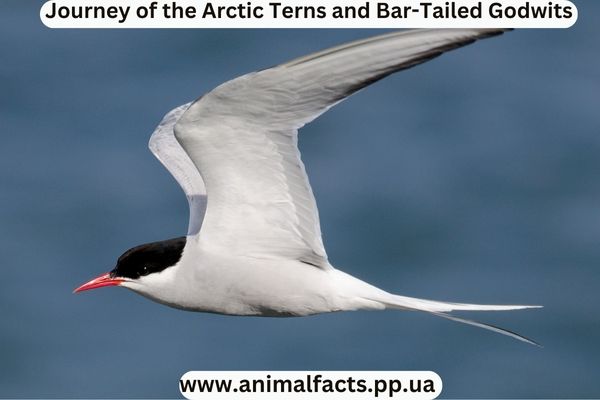Journey of the Arctic Terns and Bar-Tailed Godwits
The natural world is filled with awe-inspiring wonders, and one of the most remarkable spectacles is the long-distance migration of specific bird species. Among these migratory marvels are the Arctic tern and the bar-tailed godwit.
These birds embark on extraordinary journeys covering thousands of miles, showcasing their incredible endurance and navigation abilities.
In this article, we will delve into the captivating world of these birds and explore the longest migrations undertaken by Arctic terns and bar-tailed godwits.
Section 1: The Arctic Tern – A True Globetrotter
The Arctic tern (Sterna paradisaea) holds the title for the longest migration of any bird. Let’s discover the extraordinary journey it undertakes.
Section 2: Breeding Grounds in the Arctic
Arctic terns breed in the Arctic regions, specifically in Greenland and Iceland. They nest in colonies and raise their chicks during the short Arctic summer.
Section 3: Preparing for Migration
As summer ends, Arctic terns start preparing for their epic migration. They gather in large flocks, feeding and building up their energy reserves for the long journey ahead.
Section 4: The Route of the Arctic Tern
The Arctic tern embarks on an impressive round-trip migration, covering approximately 44,000 miles (71,000 kilometres). This extensive journey takes them from the Arctic to the Antarctic and back.
Section 5: From Pole to Pole
During their migration, Arctic terns navigate between the northern and southern polar regions, following a zigzag route to take advantage of prevailing winds and abundant food sources.

Section 6: Avoiding Harsh Winters
One of the main reasons Arctic terns undertake such a long migration is to escape the harsh Arctic winter. By flying to the Southern Hemisphere, they find more favourable conditions and abundant food sources.
Section 7: Impressive Navigation Skills
Arctic terns possess remarkable navigation abilities, relying on celestial cues, Earth’s magnetic field, and landmarks to find their way across vast distances.
Section 8: Challenges and Threats
The Arctic tern faces numerous challenges during its migration, including adverse weather conditions, predation, and human-related threats such as habitat destruction and climate change.
Section 9: The Bar-Tailed Godwit – A Record-Breaking Journey
Next, let’s turn our attention to the bar-tailed godwit (Limosa lapponica), another bird renowned for its incredible migratory feats.
Section 10: Breeding Grounds in the Arctic Tundra
Bar-tailed godwits primarily breed in the Arctic tundra, particularly in Alaska, Siberia, and northern Canada. They construct nests on the ground and raise their young during the short Arctic summer.
Section 11: The Nonstop Flight
Unlike the Arctic tern, bar-tailed godwits undertake a nonstop flight during their migration, making it an even more astonishing accomplishment.
Section 12: From Alaska to New Zealand
Bar-tailed godwits migrate nonstop from their breeding grounds in Alaska to their wintering grounds in New Zealand, covering approximately 7,000 miles (11,000 kilometres) without rest or refuelling.
Section 13: Endurance and Energy Conservation
Bar-tailed godwits undergo remarkable physiological changes to sustain their nonstop flight, reducing their body weight and conserving energy by minimizing muscle activity.
Section 14: The Importance of Stopover Sites
Although bar-tailed godwits undertake a nonstop flight, they rely on strategically located stopover sites to rest and refuel during their migration. These sites are vital for their survival and successful completion of the journey.

Section 15: Threats and Conservation
Bar-tailed godwits face various threats along their migration route, including habitat loss, pollution, and disturbances to their stopover sites. Conservation efforts are crucial to protect these incredible birds.
Section 16: Comparing the Longest Migrations
While the Arctic tern and bar-tailed godwit embark on extraordinary migrations, there are significant differences in distance, flight patterns, and navigational strategies.
Section 17: Other Impressive Migrations in the Avian World
The long-distance migrations of the Arctic tern and bar-tailed godwit are just two examples of the incredible journeys undertaken by birds. Numerous other species demonstrate equally astonishing migratory patterns.
Section 18: The Red Knot – A Marvelous Migrator
The red knot (Calidris canutus) is another bird known for its impressive migrations. It travels from the Arctic to the southern tip of South America, covering an incredible distance.
Section 19: The Monarch Butterfly – A Transcontinental Journey
While not a bird, the monarch butterfly’s migration (Danaus plexippus) is worth mentioning. These delicate creatures travel thousands of miles from North America to Mexico, showcasing the remarkable phenomenon of insect migration.
Section 20: The Importance of Long-Distance Migration
Long-distance migration serves various ecological purposes, including access to seasonal resources, breeding opportunities, and survival in changing environments. It plays a crucial role in maintaining biodiversity and ecosystem balance.
Section 21: Conservation Challenges
Long-distance migratory birds face numerous conservation challenges, including habitat loss, climate change, pollution, hunting, and collisions with man-made structures. Efforts to protect their habitats and raise awareness are essential for their survival.
Section 22: International Cooperation and Conservation Initiatives
Conserving migratory species requires international cooperation and collaborative efforts. Organizations such as BirdLife International and the Arctic Migratory Birds Initiative work towards the conservation of migratory bird species and their habitats.

Section 23: Citizen Science and Monitoring Programs
Citizen science initiatives and monitoring programs are vital in tracking and understanding bird migrations. Projects like eBird and BirdTrack allow birdwatchers and enthusiasts to contribute valuable data to scientific research.
Section 24: How to Support Migratory Birds
Individuals can contribute to bird conservation by creating bird-friendly habitats in their backyards, advocating for protected areas, reducing pesticide use, and supporting organizations dedicated to bird conservation.
Section 25: Educational Opportunities and Ecotourism
Migratory bird migrations offer excellent educational opportunities and promote ecotourism. Birdwatching tours and nature reserves provide platforms for people to witness and appreciate migration’s wonders responsibly.
Section 26: The Future of Long-Distance Migration
The future of long-distance migration is uncertain due to the threats of climate change and habitat degradation. Continued research, conservation efforts, and global cooperation are crucial for preserving these incredible natural phenomena.
Section 27: Inspiring Wonder and Awe
The long-distance migrations of birds like the Arctic tern and bar-tailed godwit inspire wonder and awe in people of all ages. They remind us of the resilience and interconnectedness of the natural world.
Section 28: Exploring Further
If you’re fascinated by bird migrations, consider delving deeper into the subject by reading books, participating in birdwatching events, or joining local birding communities. The more you learn, the more you’ll appreciate the marvels of migration.
Section 29: Conclusion
The longest migrations undertaken by birds, such as the Arctic tern and bar-tailed godwit, are extraordinary feats of endurance, navigation, and adaptation. Understanding and protecting these migratory wonders are essential for conserving our planet’s biodiversity.
Section 30: References
Include a list of reputable sources and references used for the article to give credit and allow readers to explore the topic further. Click Here For More Information About Birds.


